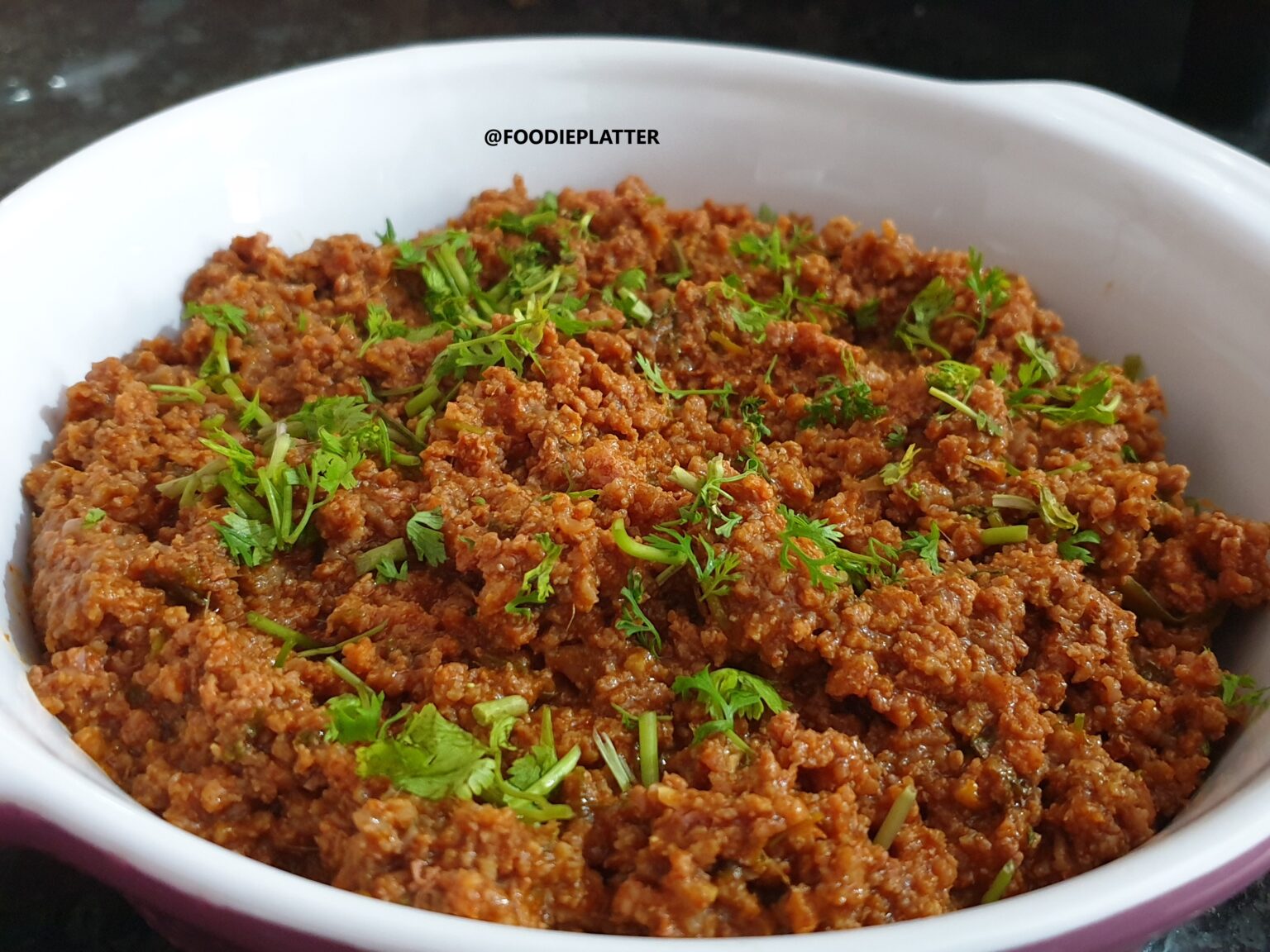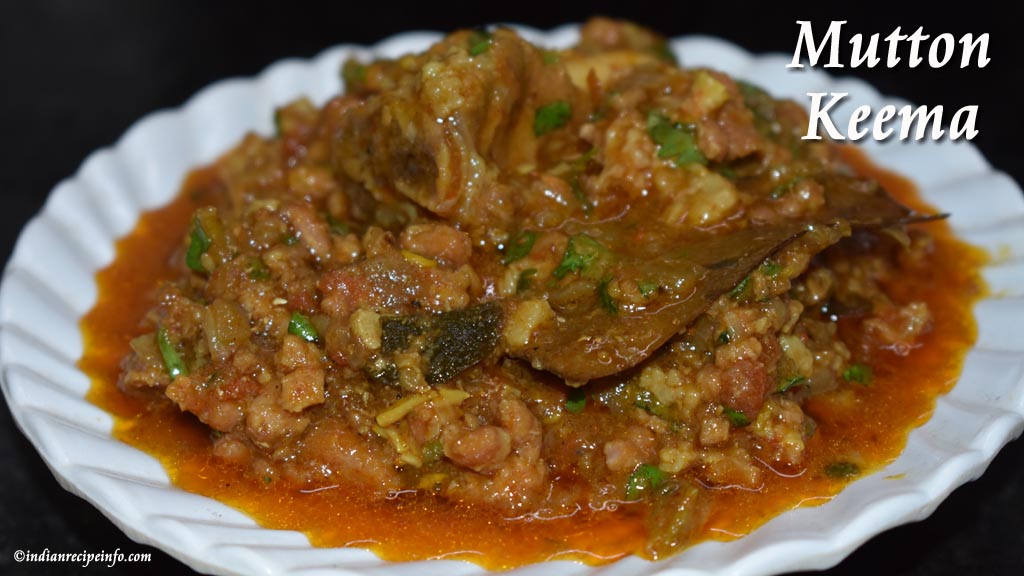Embark on a culinary adventure with our exploration of the tantalizing Mutton Keema recipe. This dish, deeply rooted in culinary traditions across the globe, is a symphony of flavors and textures that will captivate your taste buds. From the succulent minced mutton to the aromatic blend of spices, every aspect of this recipe is designed to create an unforgettable gastronomic experience.
As we delve into the intricacies of this culinary masterpiece, we will uncover the secrets of selecting the perfect mutton, the art of marinating, and the diverse cooking methods that bring out the essence of this dish. Along the way, we will explore regional variations, ingredient substitutions, and innovative serving suggestions that will inspire your own culinary creations.
Ingredients

To prepare a flavorful and authentic mutton keema, gather the following ingredients:
Mutton
- 1 pound boneless mutton (lamb or goat), preferably from the shoulder or leg
- 1/4 cup vegetable oil or ghee
Spices and Herbs
- 1 large onion, finely chopped
- 3 cloves garlic, minced
- 1 teaspoon ground cumin
- 1 teaspoon ground coriander
- 1 teaspoon red chili powder (adjust to taste)
- 1 teaspoon turmeric powder
- 1/2 teaspoon garam masala
- 1/4 teaspoon ground cinnamon
- 1/4 teaspoon ground cardamom
- 1/4 teaspoon ground black pepper
- 1 teaspoon salt
- 1/2 cup chopped cilantro leaves
- 1/4 cup chopped mint leaves (optional)
Preparation
Preparing mutton keema involves a meticulous process to ensure a flavorful and succulent dish. The initial step is to thoroughly clean the mutton and meticulously cut it into bite-sized pieces. These pieces are then ground into a fine mince using a meat grinder, resulting in a smooth and uniform texture.
Marinating
The next crucial stage is marinating the keema in a flavorful blend of spices and herbs. This marinade typically comprises a harmonious combination of aromatic spices like cumin, coriander, turmeric, and garam masala, along with fresh herbs such as cilantro and mint.
The marinade not only infuses the keema with delectable flavors but also tenderizes it, ensuring a succulent and juicy final product.Marinating time is of paramount importance, as it allows the flavors to permeate the keema thoroughly. The ideal marinating duration ranges from several hours to overnight, allowing ample time for the marinade to work its magic.
Refrigeration during marinating is essential to maintain food safety and prevent spoilage.
Cooking Methods
Mutton keema can be cooked using various methods, each offering unique advantages and flavors. Let’s explore the most common cooking methods for this versatile dish:
Pan-Frying
Pan-frying is a quick and easy way to cook mutton keema. Heat a non-stick pan over medium-high heat and add the keema. Cook for 5-7 minutes, stirring occasionally, until the keema is browned and crispy. This method is ideal for creating a flavorful and textured keema that can be used in various dishes, such as wraps or tacos.
Pressure Cooking
Pressure cooking is an excellent method for tenderizing mutton keema quickly. Place the keema in a pressure cooker along with any desired spices or ingredients. Cook for 15-20 minutes under high pressure, then release the pressure and cook for an additional 5-7 minutes.
This method results in tender and juicy keema that can be used in dishes like curries or stews.
Slow Cooking
Slow cooking allows mutton keema to develop rich flavors and a fall-off-the-bone texture. Place the keema in a slow cooker along with any desired ingredients. Cook on low for 6-8 hours, or on high for 3-4 hours. This method is perfect for creating flavorful and tender keema that can be used in dishes like casseroles or pies.
Variations

Mutton keema, a versatile dish, exhibits regional and culinary variations across different cuisines, resulting in unique flavor profiles and cooking techniques.
Variations in mutton keema recipes extend beyond regional boundaries, encompassing ingredient substitutions and cooking methods that cater to diverse palates and culinary traditions.
Regional Variations
- Indian: Indian mutton keema typically features a blend of aromatic spices such as cumin, coriander, turmeric, and red chili powder, along with ginger-garlic paste and chopped onions.
- Pakistani: Pakistani mutton keema often incorporates a mix of whole and ground spices, including black peppercorns, cloves, and cinnamon, resulting in a robust and flavorful dish.
- Middle Eastern: Middle Eastern mutton keema variations often employ a combination of herbs and spices such as mint, parsley, and sumac, lending a refreshing and tangy flavor.
Ingredient Variations
- Meat: Mutton can be substituted with other types of meat such as lamb, beef, or chicken, each imparting its own distinct flavor and texture to the keema.
- Vegetables: Adding vegetables like carrots, peas, or bell peppers to the keema enhances its nutritional value and adds a vibrant color.
- Spices: Experimenting with different spices, such as garam masala, star anise, or bay leaves, can create unique and flavorful variations.
Cooking Style Variations
- Dum cooking: Dum cooking involves sealing the mutton keema in a heavy-bottomed pot and simmering it over low heat, resulting in a tender and succulent dish.
- Grilling: Grilling mutton keema on skewers or a grill pan imparts a smoky flavor and a slightly crispy texture.
- Pan-frying: Pan-frying mutton keema is a quick and easy method that yields a crispy exterior and a juicy interior.
Serving Suggestions
Mutton keema is a versatile dish that can be served in various ways, from traditional to innovative.
As a main course, mutton keema can be paired with complementary dishes such as:
- Rice: Plain rice or fragrant varieties like basmati or jasmine rice provide a neutral base for the flavorful keema.
- Flatbreads: Roti, naan, or paratha can be used to scoop up the keema and its juices.
- Salads: A refreshing salad with vegetables like tomatoes, cucumbers, and onions adds a contrasting texture and freshness to the meal.
Mutton keema can also be used as a filling for various dishes:
- Samosas: Triangular pastries filled with mutton keema and spices.
- Pies: Individual or family-sized pies with a flaky crust and savory keema filling.
- Tacos: Warm tortillas filled with mutton keema, toppings like shredded cheese, lettuce, and salsa.
For an innovative twist, mutton keema can be used as a topping:
- Pizzas: Spread over a pizza crust and topped with cheese, vegetables, and other desired toppings.
- Pasta: Mixed into a creamy sauce and served over pasta like spaghetti or penne.
- Nachos: A layer of mutton keema on top of tortilla chips, along with melted cheese, salsa, and other toppings.
Health Benefits
Mutton keema is a nutritious dish that offers several health benefits. Its high protein content supports muscle growth and repair, while its rich iron content helps prevent anemia.
Protein Content
Mutton keema is an excellent source of protein, which is essential for building and repairing muscles. Protein is also necessary for the production of enzymes, hormones, and other important molecules in the body.
Iron Content
Iron is a mineral that is essential for the production of red blood cells. Red blood cells carry oxygen throughout the body, and iron deficiency can lead to anemia, a condition characterized by fatigue, weakness, and shortness of breath.
Vitamins and Minerals
Mutton keema is also a good source of several vitamins and minerals, including vitamin B12, zinc, and selenium. Vitamin B12 is essential for the production of red blood cells and DNA, while zinc is important for immune function and wound healing.
Selenium is a powerful antioxidant that helps protect the body from damage caused by free radicals.
Final Thoughts
In the realm of culinary delights, Mutton Keema stands as a testament to the power of tradition and the boundless creativity of the human palate. Whether you savor it as a main course, a delectable filling, or a flavorful topping, this dish is sure to leave a lasting impression.
As you embark on your own culinary journey with this recipe, may you discover the joy of creating a dish that nourishes both body and soul.
Frequently Asked Questions
What is the ideal cut of mutton for keema?
For the most tender and flavorful keema, opt for cuts with a good balance of meat and fat, such as the shoulder, leg, or rib.
How long should I marinate the keema?
Marinating time varies depending on the desired intensity of flavor. For a well-infused keema, marinate for at least 30 minutes, but overnight is preferred for optimal results.
Can I substitute other meats for mutton in this recipe?
Yes, you can use ground beef, lamb, or goat meat as alternatives to mutton. However, each meat has its own unique flavor profile, so adjust the spices accordingly.
What are some creative ways to serve mutton keema?
Beyond traditional serving methods, try incorporating keema into empanadas, spring rolls, or as a topping for baked potatoes or pasta.
Is mutton keema a healthy dish?
Mutton keema is a good source of protein, iron, and essential vitamins. However, the calorie and fat content can vary depending on the cooking method and ingredients used.
